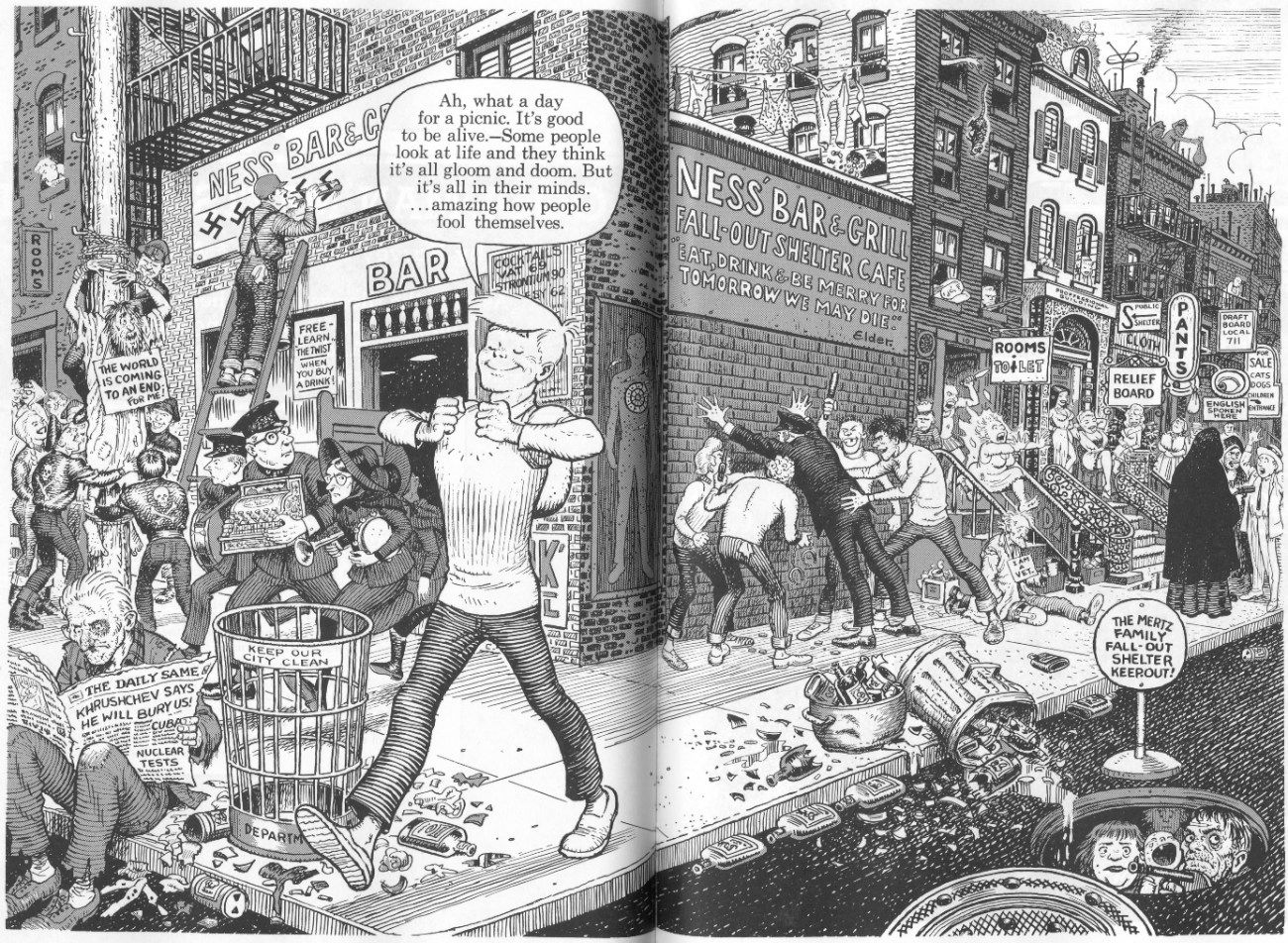Goodman Beaver

One in a series of posts dedicated to pop-culture depictions of beavers — as symbolic representations of Americans — from 1904–2003. The series derives its title from Thomas Carlyle’s warning about merely instinctive labor.
Goodman Beaver, a satirical character created in 1959 by Harvey Kurtzman (and most often drawn by Will Elder), is a naive, Candide-like character oblivious to the corruption and degeneration around him.
The best-remembered Goodman Beaver stories were created in 1961–1962 for the Kurtzman-edited magazine Help!, a grownup version of MAD. After Kurtzman and Elder parodied Hugh Hefner in a 1962 Goodman Beaver strip, Hef hired them to create a sexpot female version of the Goodman Beaver character, Little Annie Fanny, for Playboy.

Why “Beaver”? By this point, the vulgar slang meaning of the word was apparently inescapable. Everyone got the joke. I suspect this is why we begin to see a rapid decline in pop-culture beavers.

